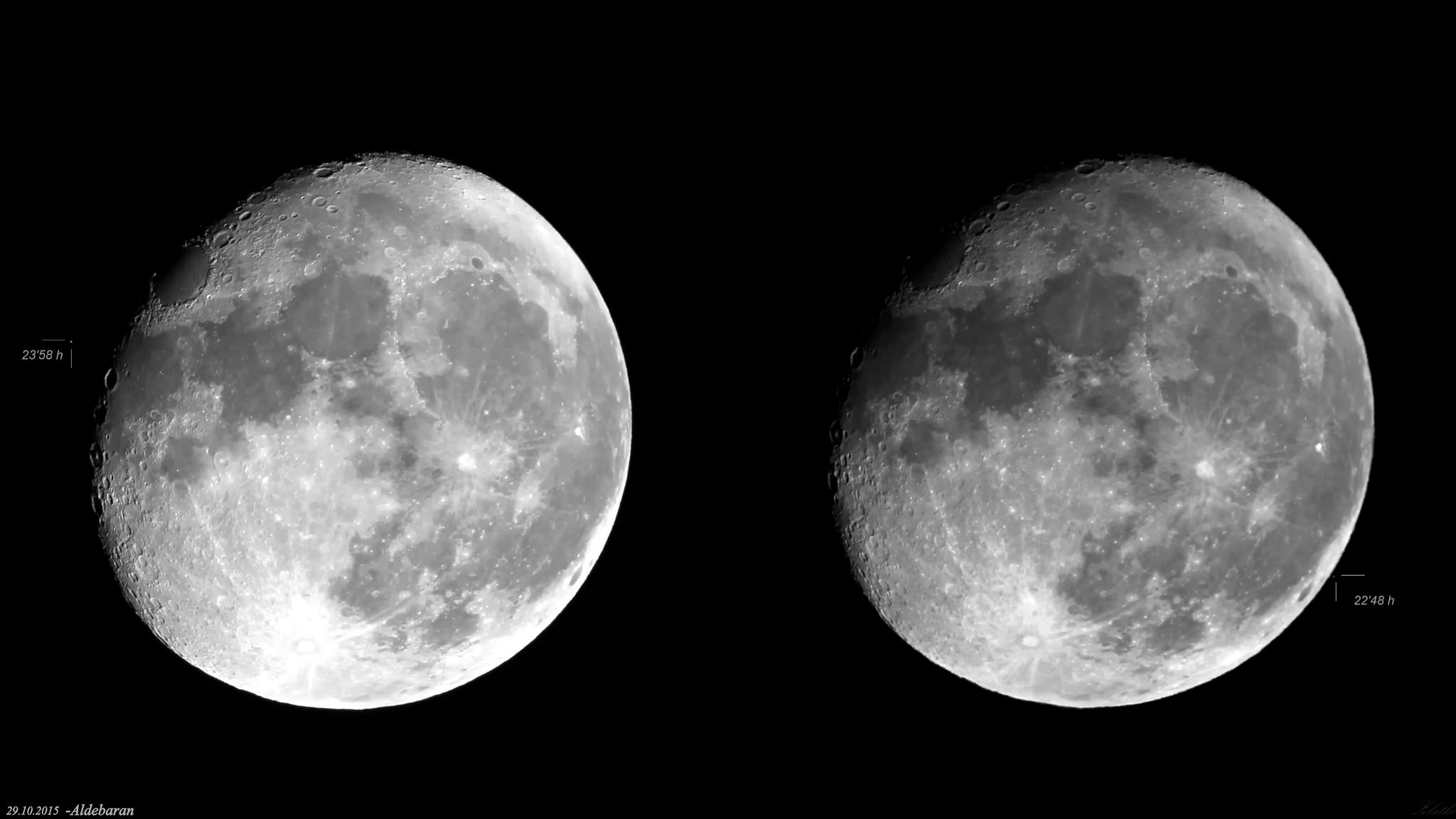An early Christmas present is on tap this week for observers in Europe, the United Kingdom and northern Asia, as the waxing gibbous Moon occults (passes in front of) the bright star Aldebaran on the evening of Wednesday December 2
3rd
.
The event will see the 87% illuminated Moon occulting the +0.8 magnitude star Aldebaran under dark skies on Wednesday evening December 23
rd
across Europe, the United Kingdom, northern Africa and northern Asia. Initial ingress will occur across the slender dark limb of the waxing gibbous Moon, with egress against the bright illuminated limb. Usually, the brilliant Moon would wash out any star near Full, but Aldebaran should remain visible, even during egress.
[caption id="attachment_124002" align="alignnone" width="580"]
The visibility footprint of the December 23rd occultation of Aldebaran by the Moon. Image credit: Occult 4.2. Click on all images to enlarge[/caption]
The International Occultation Timing Association (IOTA) maintains a page
listing local circumstances for towns and cities
in the occultation path. This is the 13
th
and final
occultation of Aldebaran for 2015
(one for each lunation), and the 13th in a series of 51 stretching from January 29
th
, 2015 to September 8
th
, 2018.
Clouded out? The Virtual Telescope Project is planning on broadcasting the occultation hosted by astronomer Gialuca Masi
live starting at 17:45 UT
.
[caption id="attachment_124010" align="alignnone" width="580"]
Watch the Moon occult a star live...
- Image credit
-
The Virtual Telescope Project[/caption]
Why observe occultations? From transits to eclipses to events such as this week's involving the Moon, the chance alignment of celestial bodies often gives us a chance to discover something of their true nature. Close binary stars have been uncovered during occultations. Transits reveal exoplanets to platforms such as Kepler. Some stars exhibit a tiny angular diameter, apparent only during occultations. The passage of an asteroid in front of a star can reveal something of its shape and size. And in the case of bright star grazes along the lunar limb, such as passage can be used to map the Moon's jagged edge in profile.
[caption id="attachment_124009" align="alignnone" width="580"]
The Moon and Aldebaran as seen from London UK on the evening of December 23rd. Image credit: Stellarium[/caption]
The southern limit graze line for Wednesday's event runs right through central Turkey, from the southwest to the northeast.
[caption id="attachment_124006" align="alignnone" width="580"]
Aldebaran approaching the lunar limb on September 5th, 2015. Image credit and copyright:
Andrew Symes
@failedprotostar[/caption]
Things passing in front of each other have even been used to pinpoint historical dates in time. Occultations of the Pleiades cited in Ptolemy's time gave medieval astronomers some inkling that the stars and constellation patterns had shifted slightly during the intervening millennia.
Four bright stars lie along the Moon's path in the current epoch:
Antares
, Regulus, Spica and Arcturus. Shining at magnitude +0.86, Aldebaran is the brightest star that the Moon
can
occult, beating out Antares and Spica by a tenth on a magnitude. Its even worth trying to spy Aldebaran near the limb of the Moon in the daytime, using binoculars under clear deep blue skies.
Fun Fact: until about 117 BC, the Moon could
occult the bright star Pollux
in the constellation Gemini. The Precession of the Equinoxes has since moved Pollux out of the path of the Moon, though it'll rejoin the Moon's occultation repertoire in the far future.
Aldebaran is also one of the most frequent hosts of the passage of the Moon, and when the Moon crosses the Head of Taurus the Bull as it does this week, it also crosses in front of the Hyades open star cluster as well,
covering and unveiling several other stars
along the way. Jean Meeus notes in his book
Astronomical Tables
that after the current cycle of occultations of Aldebaran wraps up in 2018, no bright +1
st
magnitude star will be occulted by the Moon until Antares August 25
th
, 2023. Occultations of Aldebaran won't resume until August 18
th
, 2033.
Observing bright star occultations is easy: observers in Europe and Asia will see Aldebaran wink out Wednesday night with the unaided eye, though binoculars or a small telescope will certainly help. Recording occultations is fun and easy to do: we've been able to record events simply aiming a video camera afocally through the 'scope. Running WWV radio in the background can give you a precise audio time hack during the event.
Watch that Moon, as Christmas 2015 sports a Full Moon occurring at 11:11 UT. A Christmas Full Moon last occurred in 1977, and won't happen again until 2034. Even rarer is a total lunar eclipse on Christmas, which is due to happen once again in 2531 AD.
[caption id="attachment_124008" align="alignnone" width="580"]
Aldebaran and the Moon rising post-occultation as seen from the U.S. east coast on December 23rd. Image credit:
Starry Night Education
software.[/caption]
2016 will see 13 more occultations of Aldebaran by the Moon, as well as the first occultation of Regulus in a new cycle on December 18th. And although this week's occultation will be over once the Moon rises for North America, the continent gets a similar event during the next lunation on January 20th, 2016.
More to come on the year in astronomy ahead. Don't miss these exciting events, coming to a sky near you.
Intro image credit and copyright: Zlatko Orbanic
 Universe Today
Universe Today
